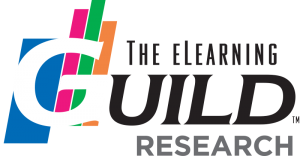David Kelly’s Curated L&D Content for the Week of 4/22/19
 This week’s curated content includes links exploring the following:
This week’s curated content includes links exploring the following:
- Places to connect with others exploring VR for education and training
- How Marketing puts curation into practice
- A look at the Millennial stereotype, and why it is so meaningless
- The importance of discovery when starting a project
- A look at how the Army is using augmented reality
- The story behind the 10% Brain Myth
Getting Social With VR Education by Steve Bambury
Looking to meet and connect with others who are exploring virtual reality for education? This post explores a number of great groups you can use to connect and learn from others in the field. (Don’t forget about the community at the Realities360 Conference in June!)
Adopt a Curation Mindset to Get More From Your Top Content by Jodi Harris
Curation has been a buzzword in our industry for a number of years, but what does it look like in practice? Sometimes the best way to understand a methodology is to look at how other industries are applying it. The Content Marketing industry has been applying curation effectively for quite some time. This post, while marketing focused, has plenty of lessons on how to apply curation in the context of L&D.
‘Millennial’ Means Nothing by John Quiggin
Most people agree that stereotypes are harmful. But while we as a society may generally agree that stereotypes based on race, religion, and other factors are unacceptable, there’s one categorization that society seems to be fine with assigning stereotypes to: generations. This post looks at the most stereotyped generation of our time – Millennials – and why the box we put people of that age group on is essentially meaningless.
Why Discovery Should Come Before Analysis by Connie Malamed
Most instructional design models start with some sort of analysis into the problem. We accept this as part of our practice, but is there something lost when we approach analysis with an idea of the end in mind? This post explores the importance of discovery, and how we can add it into the work we do.
How the Army plans to use Microsoft’s high-tech HoloLens goggles on the battlefield by Todd Haselton
One of the first major applications of Microsoft’s HoloLens is currently being piloted with the U.S. Army. There’s been a lot of press around the ethical concerns of this application, but that’s not what this article explores. Here the author explores how the tech is being used. It’s a great example of how AR can be used to improve performance.
The 10% Brain Myth, Bending Spoons, and How Johnny Carson Saved the World by Jennifer Murphy
This post is arguably worth sharing on the merits of its title alone. Thankfully the post itself is just as interesting as the title, looking at the history of one of the biggest myths in learning, and why it is complete nonsense.
Get All eLearning Guild Research Reports… FREE
Last week the eLearning Guild made our membership even more valuable by making ALL eLearning Guild Research Reports available to free members.
 The purpose of Guild Research is to inform and educate individuals and organizations, with the goal of improving our practices as a field. By making all of our research available free of charge, we can extend the reach of our reports, and help our industry advance.
The purpose of Guild Research is to inform and educate individuals and organizations, with the goal of improving our practices as a field. By making all of our research available free of charge, we can extend the reach of our reports, and help our industry advance.
Just log into our website and you’ll now be able to access every research report in our database as part of your FREE eLearning Guild membership.
Not yet a member? Start your free membership today!

Leave a Reply